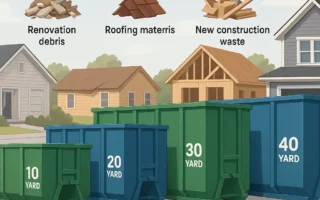Building a home is one of the most significant investments you’ll ever make. It’s not just about creating a shelter; it’s about crafting a space that reflects your personality, meets your needs, and stands the test of time. One of the most critical aspects of home construction is selecting the right materials needed to build a house. The materials you choose will determine your home’s durability, aesthetics, energy efficiency, and even its environmental impact.
Why Material Selection Matters
The Role of Building Materials in Structural Integrity
The materials you choose form the backbone of your home. They ensure the structure is strong enough to withstand external forces, such as weather, time, and even natural disasters. For example, using high-quality concrete for your foundation provides stability, while durable roofing materials protect your home from the elements.
Factors Influencing Material Choice
When selecting materials, several factors come into play:
- Climate: Materials must suit the local weather. For instance, steel is ideal for earthquake-prone areas, while clay tiles are well-suited for hot climates.
- Budget: Some materials, like natural stone, are expensive but offer unmatched durability and beauty. Others, like concrete blocks, are cost-effective and practical.
- Design Preferences: Your aesthetic vision will influence choices like flooring, wall finishes, and roofing.
- Sustainability Goals: Eco-friendly materials, such as bamboo or recycled steel, are gaining popularity due to their low environmental impact.
Balancing Tradition and Innovation
Modern construction often blends traditional materials, such as wood and stone, with innovative options like hempcrete or engineered wood. This balance allows homeowners to enjoy the best of both worlds—classic appeal and modern efficiency.
Core Structural Materials Needed to Build a House
Cement and Concrete
Cement and concrete are the foundation of most homes. Concrete, a mixture of cement, sand, gravel, and water, is used for foundations, walls, floors, and supports.
Types of Concrete
You may also read (guide to smart lighting for modern home).
- Ready-Mix Concrete: Delivered pre-mixed for convenience.
- Reinforced Concrete: Strengthened with steel bars (rebar) for added durability.
Benefits of Concrete
- Strength and Durability: Concrete can withstand heavy loads and harsh weather.
- Fire Resistance: It doesn’t burn, making it a safe choice.
- Versatility: It can be molded into various shapes and sizes.
Considerations
Concrete requires proper curing to achieve its full strength. Additionally, its production has a significant environmental impact due to CO2 emissions.
Steel
Steel is a critical material for structural support, especially in modern construction.
Applications
- Reinforcement (Rebar): Strengthens concrete structures.
- Framing: Used in beams and columns for high-rise buildings.
- Roofing: Steel sheets are lightweight and durable.
Benefits
- High Tensile Strength: Ideal for areas prone to earthquakes or strong winds.
- Longevity: Resistant to pests and decay.
- Flexibility: Can be shaped into various forms.
Wood / Lumber
Wood has been a staple in construction for centuries due to its versatility and natural beauty.
Types of Wood
- Softwood: Commonly used for framing (e.g., pine, cedar).
- Hardwood: Ideal for flooring and furniture (e.g., oak, mahogany).
- Treated Wood: Chemically treated to resist pests and moisture.
Advantages
- Natural Insulation: Wood helps regulate indoor temperatures.
- Aesthetic Appeal: Adds warmth and character to interiors.
- Ease of Use: Lightweight and easy to work with.
Challenges
Wood is susceptible to pests, such as termites, and requires regular maintenance to prevent rot and decay.
Masonry Materials: Bricks, Stones, and Blocks
Bricks
Bricks are one of the oldest and most reliable building materials.
Composition and Uses
- Made from clay or concrete, bricks are used for walls, facades, and pathways.
Benefits
- Durability: Bricks can last for decades with minimal maintenance.
- Fire Resistance: They don’t catch fire easily.
- Thermal Insulation: Help maintain indoor temperatures.
Stones
Natural stone is prized for its strength and timeless beauty.
Types and Applications
- Granite: Ideal for countertops and flooring.
- Marble: Used for decorative purposes.
- Limestone: Common in walls and facades.
Benefits
- Weather Resistance: Stones can withstand harsh climates.
- Aesthetic Appeal: Each stone is unique, adding character to your home.
Concrete Blocks
Concrete blocks are a modern alternative to bricks.
Advantages
- Speed of Construction: Larger than bricks, so fewer are needed.
- Insulation: Provide better thermal and sound insulation.
Insulation and Energy Efficiency Materials
Proper insulation is crucial for achieving energy efficiency and maintaining comfort.
Common Insulation Materials
- Fiberglass: Affordable and effective.
- Foam Boards: Lightweight and easy to install.
- Cellulose: Made from recycled paper, an eco-friendly option.
You may also read (electrician today for your home).
Sustainable Options
- Hempcrete: A mix of hemp fibers and lime.
- Recycled Materials: Reduce waste and environmental impact.
Roofing Materials
The roof is your home’s first line of defense against the elements.
Popular Roofing Materials
- Asphalt Shingles: Affordable and easy to install.
- Metal Roofing: Durable and lightweight.
- Clay Tiles: Ideal for hot climates due to their heat resistance.
Windows, Doors, and Glass Elements
Glass elements play a crucial role in aesthetics and energy efficiency.
Types of Glass
- Tempered Glass: Strong and shatter-resistant.
- Double-glazed glass provides insulation and reduces noise.
Finishing Materials
Finishing materials add the final touches to your home.
Flooring Options
- Wood: Warm and inviting.
- Tiles: Durable and easy to clean.
- Laminate: Affordable and versatile.
Wall Finishes
- Plaster: Smooth and durable.
- Paint: Adds color and personality.
Sustainable and Innovative Building Materials
Eco-friendly materials are becoming increasingly popular.
Examples
- Bamboo: Fast-growing and renewable.
- Recycled Steel: Reduces waste and energy consumption.
Budgeting and Planning for Materials
Tips for Sourcing Materials
- Compare prices from multiple suppliers.
- Opt for bulk purchases to save money.
You may also read (understanding the benefits of double glazing for modern homes).








